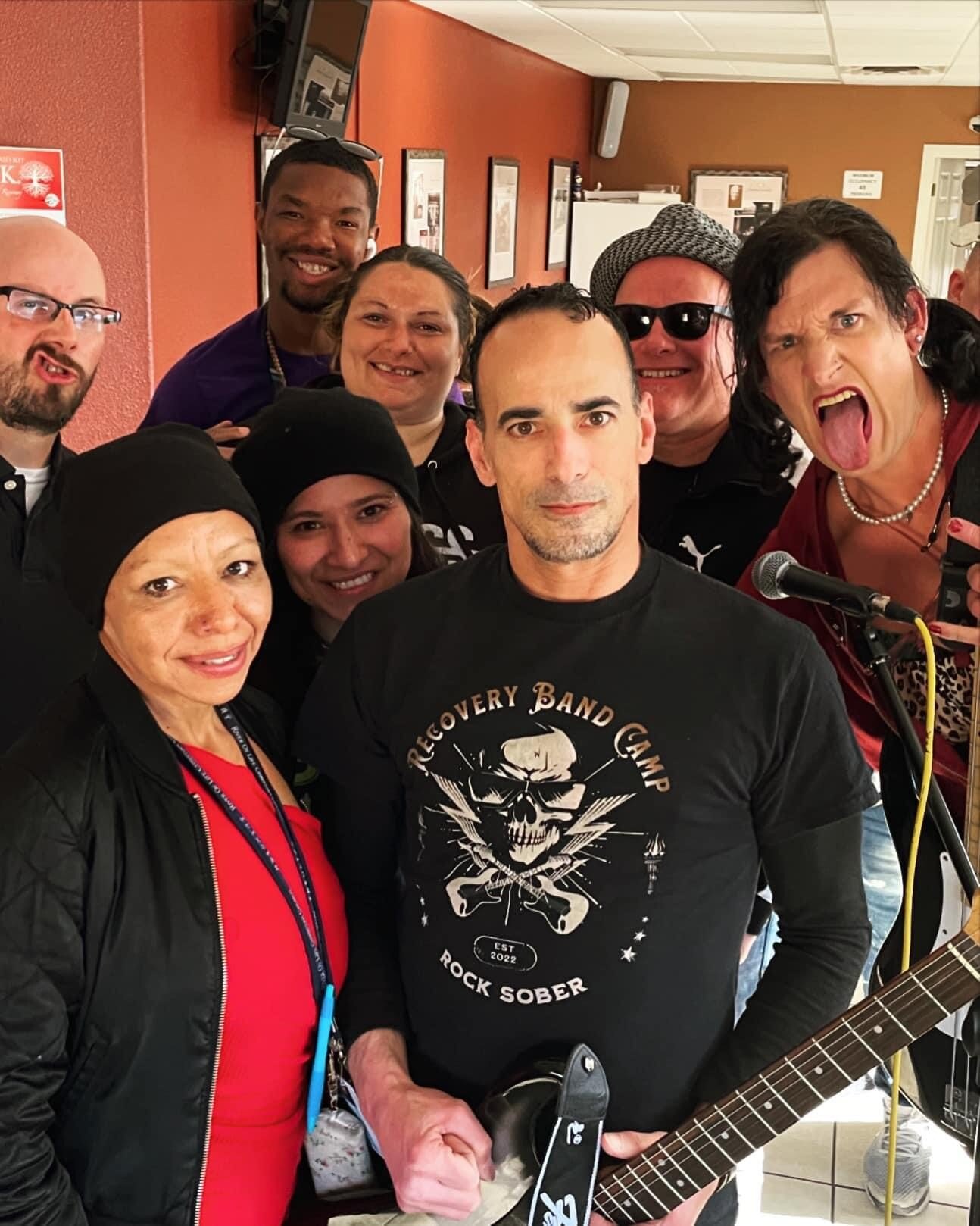[Guest blog post by SMART Facilitator Kelly Scullin]
Ever since I joined SMART Recovery and began practicing Unconditional Self-Acceptance (USA), I can’t help but giggle when I hear chants of “USA! USA! USA!”
What a world this would be if “USA!” caught on as a positive contagion. Imagine stadiums, rallies, ceremonies, and street parades erupting in chants that weren’t about winning or dominance, but about embracing ourselves — flaws and all — unconditionally.
[USA! USA! USA!]
If more of the world practiced unconditional self-acceptance, what might change? For starters, the temperature in our inner worlds would cool down. We’d stop interpreting every mistake or shortcoming as a signpost that we’re unworthy, unlovable, or irredeemable. That shift alone frees up a massive amount of emotional energy — the kind we can reinvest in making better choices, deepening relationships, and contributing to our communities.
The dividends would ripple outward:
- More resilience. When our worth isn’t on the line, we can face setbacks without crumbling.
- More empathy. If we stop being so hard on ourselves, we can extend that grace to others.
- Less defensiveness. Without ego-protection mode, we can admit mistakes and move forward.
- Healthier risk-taking. Failure stops being the end of the story — or the end of our worth.
- Fewer judgment spirals. Accepting our own imperfections makes it easier to accept others’.
In short: if the enthusiastic chant, “USA!” really stood for Unconditional Self-Acceptance, we’d see more people rooted in their own value, less afraid of their humanity, and more willing to extend the same acceptance outward.
If you’re anything like me, though, you might indeed require a stadium of people enthusiastically cheering you on to tackle your inner critics and start reifying Unconditional Self-Acceptance.
For so long, I grasped the concept intellectually — I even fervently agreed with its premise! But internalizing it and letting it live within me genuinely felt… impossible. Like I was reciting the lyrics without the vocal range to ever learn the tune.
That’s because self-acceptance isn’t just an idea. It’s a practice. And for many of us, it’s a practice that needs to live in our bodies as much as our brains.
When we only think about acceptance, we’re still operating in the same mental loops that keep us tangled in self-criticism. But when we involve our bodies — through movement, writing, or other kinesthetic learning — we engage different neural pathways. We create new associations, ones that feel less like “trying to believe” and more like “something I just do.”
The good news? You don’t need a stadium of cheerleaders. You just need a few low-stakes experiments — a posture shift when you catch yourself slumping in shame, a grounding breath before you respond to your Urge Voice, or a quick, structured exercise that lets you see — in black and white — and believe that your worth doesn’t live or die with one bad decision.
Which brings us to one of my favorite micro-practices for embodying USA: a 10-minute reflection called Two Lists:
Step 1: Get Present
Settle into a seated position and feel the chair or ground beneath you, supporting you while gravity keeps you grounded.
Take a few deep breaths: inhale over four beats, hold for four beats, then exhale slowly for twice as long as your inhale. Empty all the way before repeating this breath two or three more times until you feel present in this moment.
Step 2: Warm-Up
Read the following scenarios, one at a time, and roll with the first memories that come to mind. Simply observe yourself without judgement from the outside in as if you’re a fly on the wall or watching a scene from the movie of your life:
First: Think of a time you felt proud of yourself.
Sink into the memory:
-
What was happening?
-
What time of day was it?
-
Where were you?
-
Was anyone with you?
-
What is important about this memory for you?
Now: Think of a time you felt disappointed in yourself.
Don’t stay here long, but do a little noticing before you move on:
-
What was going on?
-
What was the scene like?
-
Where did this happen?
-
Who was with you, if anyone?
-
What stands out about this memory for you?
Jot down anything you want to remember.
What do you notice about self-acceptance? Is it easy to tie your worth to those moments, as if you’re a better or worse person — worthy or unworthy — depending on the day or the outcome?
If you answered, “Yes,” don’t worry; the work of our Two Lists reflection will serve to loosen these connections of worth. So stick with me and stay present! Resist the urge to look ahead.
Step 3: Make Two Lists
On a sheet of paper, draw a line down the middle:
-
Label one side: Things I value about myself
-
Label the other side: Things I want to improve or change
Spend a few minutes listing your thoughts under each column. Keep your lists focused on traits, habits, or behaviors — not your entire identity.
When you’re finished, review both lists. Allow yourself to feel the energy from each list respectively. One might feel affirming, the other a bit heavier.
But here’s the key: both lists describe the same human being.
One does not erase the other.
You are still a whole, worthwhile person, deserving of love, care, attention, and acceptance — even with the “improve” list in your hands.
Step 4: Reflect
Revisit your initial warm-up and remind yourself that both memories and both lists belong to the same whole and worthy human being — you.
-
What is it like to see these two memories and hold both as equal? And your two lists as well?
-
What is surprising you?
-
What emotions surface when you hold each vision and each column as the same person, deserving of unconditional acceptance?
-
Do your columns share any themes or values? (For example, perhaps you value yourself as a learner and are also lamenting some unfulfilled educational goals on your “improve/change” list. Further evidence that these lists belong to the same valuable human being!)
Jot down a few sentences about what you’re seeing unfold within you. In particular, pay attention to what is happening in your body and emotions as you process this experience.
Step 5: Reframe and Remember
Unconditional Self-Acceptance doesn’t mean we stop improving. It means we stop treating our worth like it’s on a stock ticker, going up or down with every success or setback.
With this reflection, you are practicing holding your strengths and your challenges at the same time — and recognizing they’re both part of one whole person who is, and always will be, in the process of becoming. The more we live from this place, the more resilient, compassionate, and open-hearted we become.
Make it a Mantra
“I am valuable and whole, no matter my mistakes or successes.”
Bonus Exercise
Keep your two lists somewhere private. Revisit them in a week, adding to each side, and remind yourself: you are the same whole human in both lists.
Two lists, one loveable you.
Now… say it with me: “USA! USA! USA!”
To find and in-person or online meeting go to the “Meetings” tab at www.smartrecovery.org



